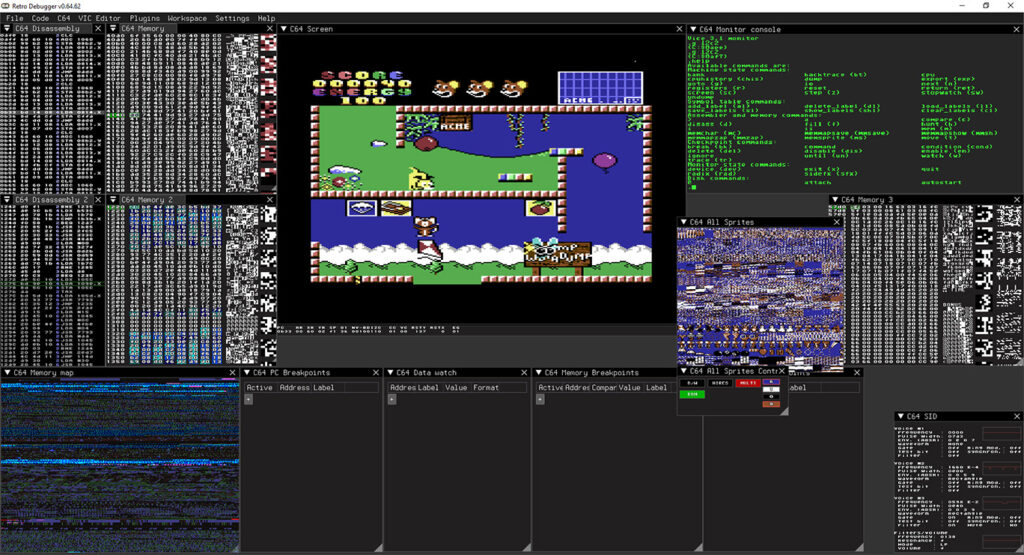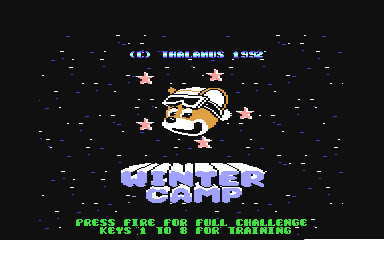5.01.23
Two weeks since it’s release and it already became my default “visualization”/testing part of disassembling/reassembling toolkit, right next to Regenerator. I ocassionally used it in older versions when it was still called C64 Debugger, but because of it’s instability and unusual UI interface, I still preferred command line in Vice … Which was honestly suffering when I compare it to the luxury Retro Debugger provides. But really 🙂 With new name, new GUI interface using DeaR ImGui, NES/Atari XL/XE support, and as I am noticing, excellent stability, I rarely need to start vice anymore 🙂 The perfect tool for C64 developer.
Yes, it’s still having some drawbacks or not fully functional parts, but hey, this is still just v0.64.62. Besides, source code is available at Github, as win/linux/macos binaries also.

24.12.22
One of the last full releases for Commodore 64 from 1992. is finally converted to cartridge release for it’s 30th anniversary. And completed just in perfect X-mass time 🙂

Read the rest of this entry »
27.11.22
Tips for surviving 6502 assembly-language programming
[Joe Holt is a freelance technical writer. He can be reached at 476 West Main Rd., El Centro, CA 92243. This is article from 1985.]
WITH THE ADVENT of complex microprocessors whose operation codes (op codes) begin to resemble some high-level languages, the days of the 6502 seem numbered. Indeed, a microprocessor with only three 8-bit registers and a 64 K-byte address space is apparently no match for a piece of silicon that can walk through 4 gigabytes of memory in 32-bit strides and work with hundreds of bits worth of registers. I won’t try to fool you: The 6502 will not be around forever. But when the last of its species emerges from the forge, it will be joining an installed base of more than 3 million 6502-based computers. There is merit, therefore, in discussing the peculiarities of this dying breed, the ins and outs of this most nonorthogonal microprocessor.
The 6502 has three 8-bit registers (only one of which can be used in arithmetic and Boolean operations), a single-page (256-byte) fixed stack, and an optimized performance when dealing with the first 256 bytes of memory. But what may be considered a tight architecture is befuddled by an instruction set full of inconsistency and seeming favoritism to certain combinations of addressing modes and op codes. Steve Wozniak even admitted that the only reason he put a 6502 in his Apple II was because it was cheap.
In order to gain the most benefit from the 6502, an assembly-language programmer must understand these idiosyncrasies and us them to his or her advantage.
Read the rest of this entry »
18.11.22
“Ocean” Game Cartridges
“Type A” (up to 256k):
- 128k Batman
- 128k Battle Command
- 128k Double Dragon
- 128k Navy Seals
- 128k Pang
- 128k Robocop 3
- 128k Toki
- 256k Chase H.Q. II
- 256k Robocop 2
- 256k Shadow of the Beast
- 256k Space Gun
“Type B” (512k):
Note: other sizes (such as 32k) exist in the wild as crt files, but these do not seem to be official ocean cartridges.
Read the rest of this entry »
18.11.22
Seems simple, but Windows considers source and destination as same filename and it’s not easy …
for /r %D in (.) do @for /f "eol=: delims=" %F in ('dir /l/b/a-d "%D"') do @ren "%D\%F" "%F"
18.11.22
Welcome! This is mainly about stuff I’m interested, projects I am doing, documentation, schematics, code snips, … which I always need. So, let’s start.
Commodore 64 stuff

